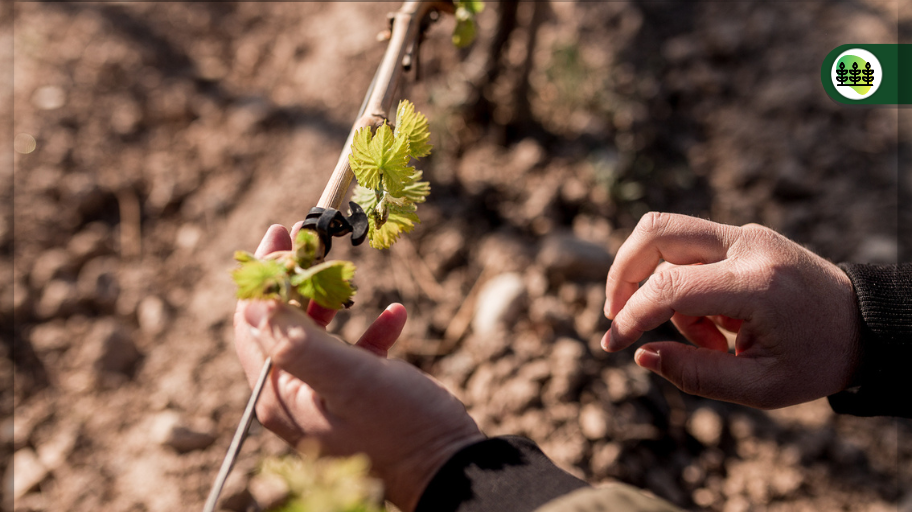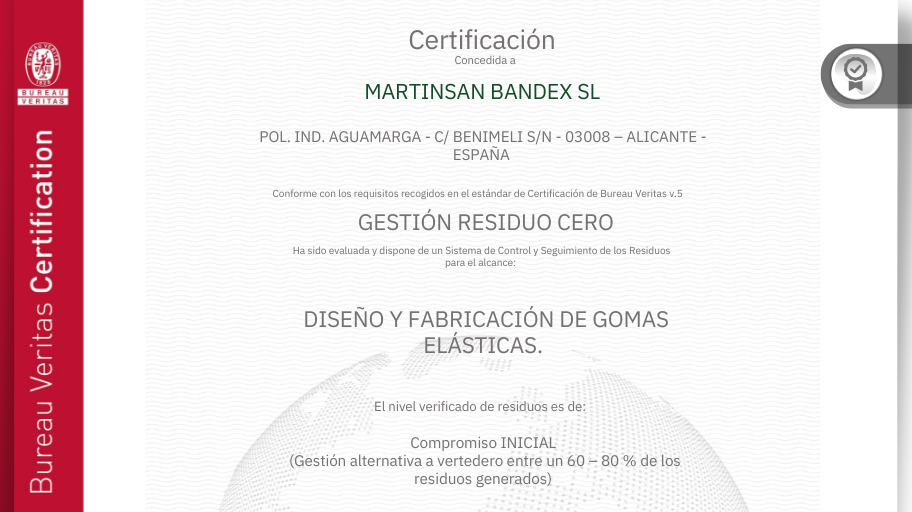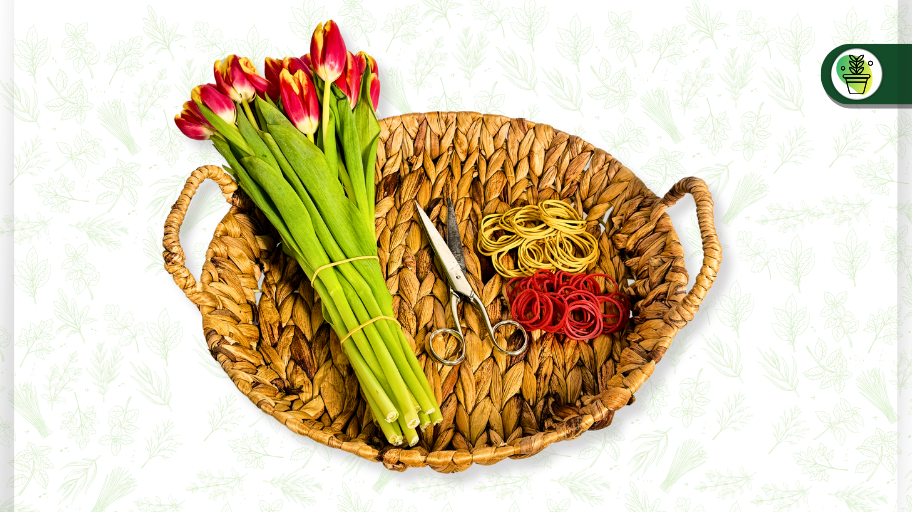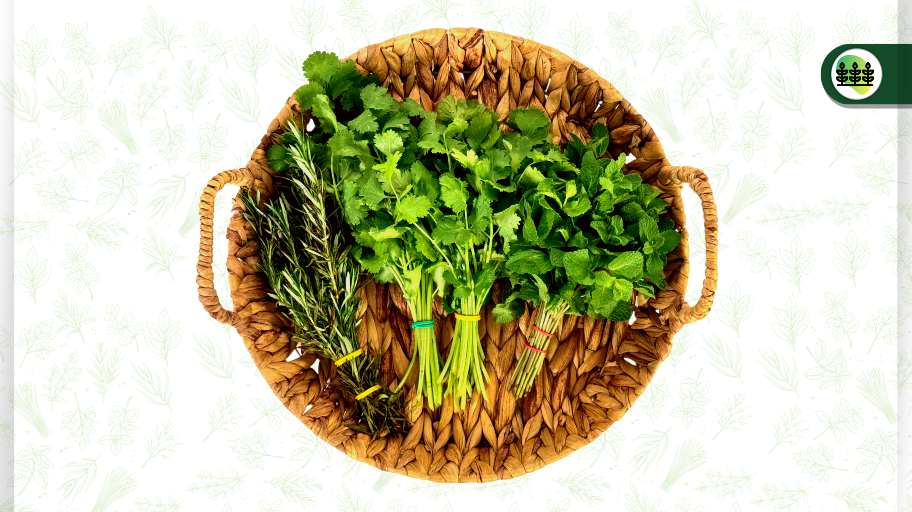Crop staking is a fundamental agricultural practice involving supporting plants to guide their growth, ensuring better sun exposure, optimal aeration, and facilitating harvesting. This technique is crucial for the health and productivity of many crops and plays a vital role in efficiently managing space within the field.
At the heart of this practice are anchor rubber bands for staking, an essential element that ensures safe and adaptable support for growing plants.
Staking Systems: An Agricultural Practice for Supporting and Guiding Crop Growth
Adapted to the needs of crops, staking emerges as a cornerstone for achieving efficient and sustainable agriculture. This practice, which adjusts plant growth towards light and improves air circulation, is fundamental for increasing yield and preventing diseases.
Staking Systems
Different staking systems are adjusted to the crop type, environmental conditions, and production goals. Here are some of the most common and their applications:
- Vertical Staking System
This system is ideal for climbing plants or those with long stems, such as tomatoes, cucumbers, beans, and peas. It allows controlled vertical growth, facilitates pollination, and improves exposure to sunlight and air circulation, reducing the risk of diseases. Moreover, it makes harvesting more accessible and efficient.
Application: It involves using poles, canes, or meshes placed vertically next to the plants, which are guided to grow along these structures with the support of tying and securing systems like anchor rubbers.
- Horizontal Staking System
Perfect for berry crops, like raspberries and blueberries, and some flower varieties that require lateral support. This type of staking provides broad support for branches that extend horizontally, prevents the fruit from touching the ground, and facilitates efficient agronomic management.
Application: Consists of stretching strings, wires, or nets between supports along the row of crops, creating a network that supports the plants as they grow.
- Trellis Staking System
Trellises are predominantly used in vineyards and some climbing fruits like kiwis and peaches. They maximize solar exposure, facilitate pruning and plant management, and optimize space, allowing for a higher planting density.
Application: Involves creating a support structure in a grid or network along the rows of crops. Plants are guided to grow following the trellis pattern, which facilitates maintenance.
- Arch or Tunnel Staking System
It is ideal for crops that benefit from a controlled microclimate, such as certain leafy vegetables and herbs. It provides structural support for plastic or mesh covers, creating a protected environment that can help extend the growing season.
Application: Arches or tunnels are built over the rows of plants where the covering material is placed. This system supports the plants and protects against weather inclemencies, pests, and animals.
Each of these staking systems offers unique advantages and is designed to meet the specific requirements of different types of crops, significantly improving the chances of agricultural success.
Tying and Securing Systems
The success of staking depends on the type of structure used and the tying and securing system. Today, we compare some of these most used systems, taking into account the time required for tying, installation time, compounds, and their elastic, durability, and reusability characteristics*:
| Staking Systems | Tying | Application | Materials | Durable | Flexible | Reusable |
| Anchor Bands | Manual | Fast | Non-Natural | High | Very High | Yes |
| Clips | Manual | Very Fast | Varies | Medium-High | Medium-High | Depends on the material |
| Automatic Tyer | Mechanical | Very Fast | Depends on the material |
Depends on the material |
Medium | No |
| Agricultural Twine or Rafia |
Manual | Moderate | Natural | Low-Medium | Low | No |
| Staples | Manual | Fast | Non-Natural | Medium | Low | No |
The choice of the right tying system will depend on the crop’s specific needs, personal preferences regarding sustainability, and the desired efficiency in the staking process. Comparatively, the anchor rubber bands offer an optimal balance between efficiency, plant protection, and adaptability, standing out as the preferred option in numerous agricultural applications.
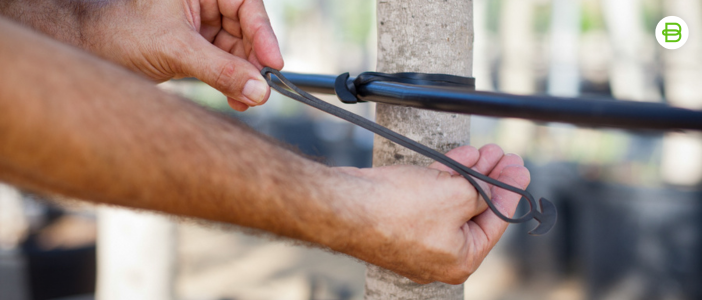
Discover the Advantages of Anchor Bands for Staking
Bandex’s anchor rubber bands for staking are crucial components in modern agriculture, designed to offer a safe and flexible securing method for plants. These anchor bands, made from elastic and durable materials, allow a perfect fit around the plant stems without causing damage while providing a firm grip on the support or stake. Let’s take a closer look at some of their distinct advantages:
Allows Plant Growth Without Strangulation
The main advantage of anchor bands lies in their ability to support the natural development of the plant. Unlike more rigid options that can restrict and even damage the stem as the plant grows, these expand in a way that accompanies growth without exerting undue pressure on the plant.
This level of flexibility ensures that the plant can mature and strengthen properly, contributing to a healthier and more productive structure.
No Tools are Needed, and Easy-to-Place
The simplicity of their design allows anyone, from the experienced farmer to the gardening enthusiast, to apply them without needing special tools. This aspect is particularly valuable in extensive crops, where time and efficiency are critical, allowing significant savings in labor and time.
Highly Resistance
Designed to withstand extreme weather variations, from intense summer sun to winter frosts, these anchor bands maintain their integrity and functionality over time. This durability makes them a long-term investment, as their reusability extends for several seasons, decreasing costs and the environmental impact associated with replacing materials.
Reusable
The reusability of anchor rubber bands is not only possible due to their robustness but is also a practice that promotes sustainability within agriculture. By reducing the need to acquire new support materials each season, farmers can decrease their carbon footprint and contribute to environmental conservation.
Versatile
From climbing vegetables to young trees, their flexible design adjusts to different diameters and weights, offering tailored support for each plant. This adaptability makes them indispensable in any cultivation strategy, ensuring that all plants benefit from optimal support regardless of their type or size.
What Types of Plants Can Be Supported with Anchor Rubbers?
We have already explained why anchor rubber bands represent a versatile and effective solution for staking. Their elastic and resistant design makes them ideal for use in crops that require delicate yet firm support during their growth and development. Olive trees, vineyards, fruit trees, and new plantings benefit the most from using these anchor bands.
Olive Trees
Staking olive trees in their early stages is vital for their correct growth. Anchor bands offer flexible and secure support, adapting to the olive tree’s development without causing damage. This system improves the tree’s resistance to adverse conditions, encouraging healthy growth.
Vineyards
Anchor rubber bands are key in vineyards to direct the orderly growth of the vines. Their flexibility adjusts to the dynamic development of the vines, reducing damage and simplifying pruning. Staking improves the solar exposure of the grapes and air circulation, which is essential for the quality of the harvest.
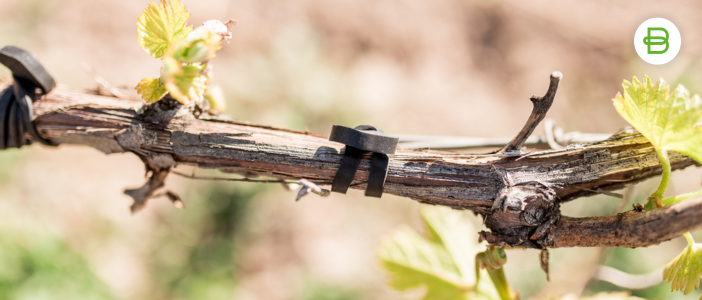
Fruit Trees
Anchor bands benefit young fruit trees, such as apple and cherry trees, by holding them in place and preventing damage from rigid ties. They promote healthy vertical growth, which is crucial for future fruit production and harvesting.
New Plantings
Anchor rubber bands for staking are ideal for new plantings. They offer the necessary support to establish a strong structure and roots in young plants, from ornamentals to horticultural ones. They facilitate the success of the planting from sowing to full establishment.
Attaching Protectors in Plantations
Another application is fastening protectors in new plantations, protecting the plants from damage, animals, and the weather. Their elasticity provides a secure and adjustable closure, adapting to the plant’s growth. This use underscores their versatility and role in ensuring the success and healthy development of the plantations.
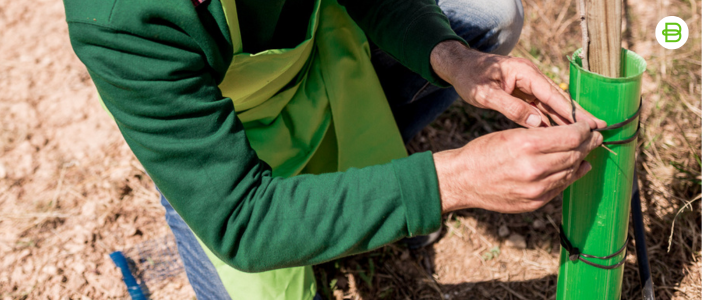
Staking is key to crop growth, and anchor rubbers offer effective and sustainable support. Choosing the right system ensures high performance and improves the quality and quantity of production.
Discover how Bandex, a European manufacturer of elastic rubber bands, can revolutionize your agricultural practice. Known as “Europe’s warehouse” for our wide stock availability, we offer the most efficient solutions in anchor rubbers for staking.
Place your order now!

*Legend: Type of Tying: Indicates whether the system requires manual operation or can be used with mechanical devices // Application: Relative to the speed at which the tying systems can be installed or applied // Materials: Differentiate between natural and synthetic materials // Durability: The ability to withstand adverse weather conditions and the passage of time // Flexibility: The ability to adapt to the plant’s growth and different shapes and sizes // Reusability: Indicates whether the tying system can be used in multiple growing cycles.

